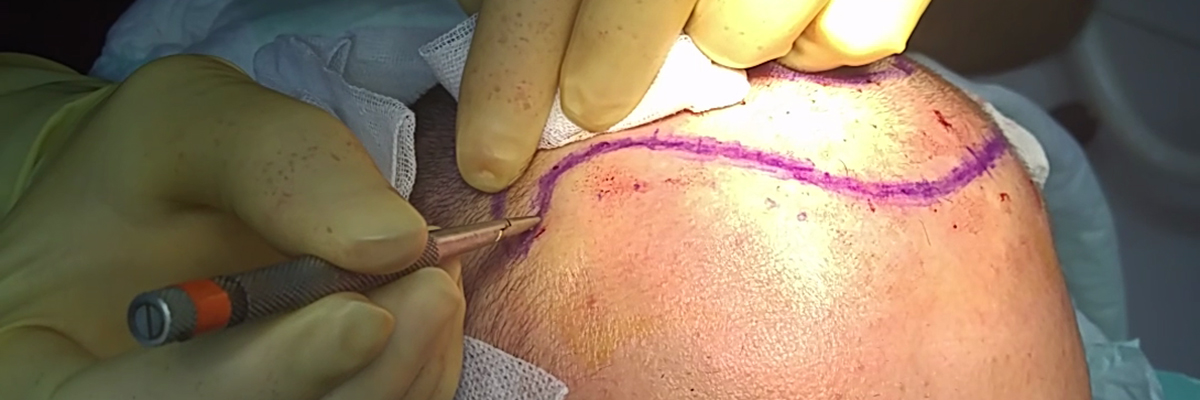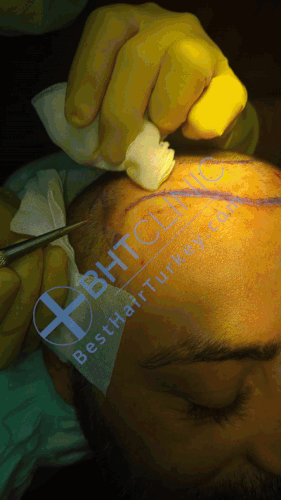
Manual Punch Implantation (Lateral Slit Technique)
Instead of using the traditional way of implanting donor grafts into channels made with a micro-motor, Dr. Abdulrahman Cevik at the BHT Clinic in Turkey is using a Manual Punch Implanter tool (Lateral Slit implantation technique). This has the advantage of inflicting considerably less trauma to the recipient area during a hair transplantation procedure. The Manual Punch also allows our surgeons to implant more grafts on the same area of the scalp, thereby increasing the density of implanted grafts and giving our patients much better cosmetic results.
Main Advantages of the Manual Punch Implanter
- Higher density of implanted hair
- Less trauma and damage to the scalp
- No "dots" in the recipient area
- Superior cosmetic results
Micro-motor vs. Implanter Punch

For years, hair restoration surgeons around the world have been using the micro-motor tool to create implantation channels. Donor grafts were then inserted into these channels. This method of implantation has a disadvantage: the use of micro-motor on the recipient areas results in unnecessary trauma to the scalp. The channels created by the micro-motor in the front and the top of the scalp are oftentimes much larger than is indeed needed for successfully implanting the grafts.
We introduced the Manual Punch tool to improve the implantation process and take the next step to deliver truly natural results of FUE hair transplantation. The Manual Punch is a manual tool, meaning that there is no electrically driven parts. When opening donor channels, Dr. Abdulrahman Cevik essentially makes tiny punctures in the scalp using the Punch tool. These channels are smaller than the ones created by a mictro-motor and are just big enough for donor graft implantation.
Benefits of the Manual Implanter Punch
As the resulting punctures in the scalp are so small, the transplantation team at BHT Clinic can create more donor channels per square centimetre, individually adjusting the density for each patient depending on the scalp tissue to avoid graft loss. The smaller punctures also provide a tight hold on the transplanted graft and result in shorter healing times. This means increased graft re-growth rates and better results.
 and Viber
and Viber 
 По-русски
По-русски